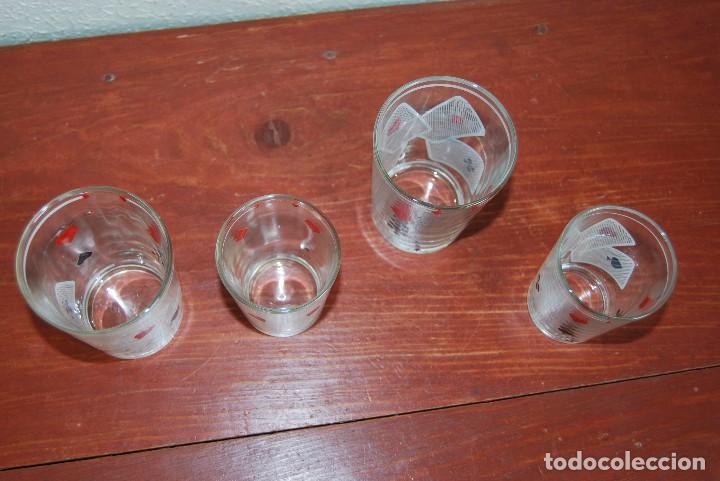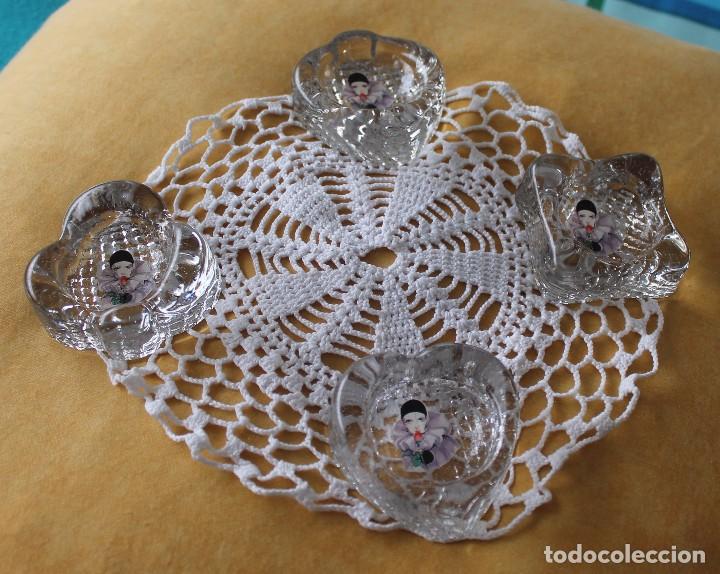Cristal Poker
- KKPoker is the latest hot poker mobile App worldwide, Play Global League Battle, Be The Champion and Win Tons Rewards! And anyone can host own poker club in KKPoker, Play with real friends anytime anywhere.
- Official site 123 E. Artesia Blvd., Compton CA.
PubMed • Full text • PDF
500 ლარიანი გარანტირებული ტურნირი სეკაში დაიწყება 22:30 საათზე. Cristal Poker Club, poker themed iphone 5s cases, uk casino sites no deposit, triple 777 slots for fun only no download. Cristal Poker (closed) Leave a comment (1) Category 'D' - rooms-cheaters and closed rooms. Cardmates doesn’t recommend you to play on the sites of this category.
- 6Population
- 8Outcomes
Clinical Question
Among ICU patients with hypovolemic shock, does fluid resuscitation with colloids reduce mortality at 28 days when compared to crystalloids?
Bottom Line
Among ICU patients with hypovolemic shock, there was no mortality benefit at 28 days with colloids over crystalloids for fluid resuscitation.
Major Points
Hypovolemic shock results in tissue hypoperfusion that may be life-threatening. Fluid resuscitation is the mainstay of therapy, with crystalloids and colloids among the most commonly used fluid replacement types. Colloids like albumin, dextrans, and hydroxylethyl starches may selectively fill the intravascular space compared to crystalloids like normal saline and lactated Ringer's solution, which are more widely distributed in both intra- and extravascular fluid compartments. Evidence of a clinical benefit of colloids over crystalloids was lacking, however. The 2004 SAFE trial found no benefit for albumin over normal saline for volume resuscitation in a diverse group of ICU patients. Whether colloids would benefit a more specific group of ICU patients with hypovolemic shock was unknown.

The 2013 Colloids Versus Crystalloids for the Resuscitation of the Critically Ill (CRISTAL) trial randomized 2,857 ICU patients with hypovolemic shock, mostly with concurrent sepsis, to volume resuscitation with either colloids or crystalloids. Both groups received isotonic crystalloids for maintenance fluids. The trial was stopped before it reached its goal recruitment of 3,010 patients. There was no difference in the primary outcome of all-cause mortality at 28 days between the two groups, although colloids were associated with a reduction in the secondary outcome of all-cause mortality at 90 days (30.7% vs. 34.2%; NNT 29). Mortality curves first separated at 21 days. The authors caution that the 90-day mortality difference should been taken as an opportunity for further exploration rather than firm evidence of a survival benefit with colloids.
Guidelines
Surviving Sepsis Campaign severe sepsis and septic shock (2016, adapted)[1]
- Recommend crystalloids as the fluid of choice for initial resuscitation and subsequent intravascular volume replacement (strong recommendation, moderate quality of evidence)
- Suggest balanced crystalloids or saline for fluid resuscitation (weak recommendation, low quality of evidence)
- Recommend avoiding hydroxyethyl starches for intravascular volume replacement (strong recommendation, high quality of evidence)
- Suggest crystalloids over gelatins for resuscitation (weak recommendation, low quality of evidence)
Design
- Multicenter, open-label, randomized comparative trial
- N=2,857 ICU patients with hypovolemic shock
- Colloids (n=1,414)
- Crystalloids (n=1,443)
- Setting: 57 ICUs in France, Belgium, Canada, Algeria, and Tunisia
- Enrollment: 2003-2012 (stopped after interim analysis)
- Follow-up: 90 days
- Analysis: Intention-to-treat
- Primary outcome: All-cause mortality at 28 days
Population
Inclusion Criteria
- Hypovolemic patients requiring fluid resuscitation who had not received fluid during the current hospital course.
- Acute hypovolemia defined by:
- MAP <60mmHg
- Orthostatic hypotension (decrease in systolic >20mmHg from supine to semirecumbent)
- Delta pulse pressure >13%
- Evidence of low filling pressures and low cardiac index (assessed invasively or noninvasively)
- Signs of tissue hypoperfusion or hypoxia, including 2:
- Glasgow Coma Scale score <12
- Mottled skin
- UOP <25mL/hr
- Capillary refilling time >3 sec
- Arterial lactate >2mmol/L
- BUN >56mg/dL
- Fractional excretion of sodium <1%
Exclusion Criteria
- Previous fluid therapy in ICU
- Anesthesia-related hypotension
- Advanced chronic liver failure
- Chronic renal failure
- Acute anaphylaxis
- Inherited coagulation disorder
- DNR order
- Pregnant
- Burned >20% of BSA
- Allergy to any study drug
- Refused consent
- Dehydrated
- Brain death/organ donor
Baseline Characteristics
From the colloid group. Groups were similar.
- Demographics: Age 63 years, male 62%
- Baseline health data: Weight 70 kg, weight 170 cm, GCS 11, SBP 92 mmHg, HR 105 BPM, UOP 40 mL/h
- Laboratory values: Lactate 2.3 mmol/L
- Strata: Sepsis 56%, trauma 6%, hypovolemic shock not from sepsis or trauma 39%
- Source of ICU admission: Community 48%, ward 44%, other ICU 4%, LTC facility 3.6%
- ICU type: Medical 71%, emergency surgery 20%, scheduled surgery 8%, trauma 2%
- Baseline and acute illness ratings:
- McCabe class:
- No underlying disease or no fatal disease: 64%
- Underlying fatal disease with >5 years life expectancy 30.3%
- Underlying rapidly fatal disease with <1 year life expectancy: 6%
- Kraus disability scale:
- No functional limitations, prior good health: 24%
- Mild-moderate limitation of activity from chronic medical condition: 31%
- Chronic disease with serious restriction of activity: 23%
- Severe restriction of activity due to chronic disease: 21%
- SAPS II score: 48
- SOFA score: 8
- Of injured patients, injury severity: 21
- McCabe class:
- Fluids prior to admission: Crystalloids 37.2% (of recipients, median 1 L), colloids 41.4% (of recipients, median 1 L)
- Other interventions: Mechanical ventilation 71%, renal replacement therapy (RRT) 5%
Interventions
- Patients were randomized to a group with stratification by center and admission diagnoses
- Colloids: Volume resuscitation with either hypooncotic solutions (eg, gelatins, 4-5% albumin) or hyperoncotic solutions (eg, dextrans, hydroxyethylstarches, 20-25% albumin)
- Crystalloids: Volume resuscitation with isotonic saline, hypertonic saline, or buffered solutions (eg, LR)
- Investigators chose which type of the predesignated fluid and how much to administer except:
- Total dose of hydroxyethyl starch was maximum of 30 mL/kg
- Must follow local regulatory agency recommendations
- Both groups received maintenance fluid with isotonic crystalloids
- Both groups received albumin for hypoalbuminemia (<2 g/L) per the discretion of the treating physician
- Discontinuation of treatment on transfer out of ICU
Outcomes

Comparisons are colloids vs. crystalloids. RR is relative risk. MD is mean difference.
Primary Outcome
- All-cause mortality at 28 days
- 25.4% vs 27.0% (RR 0.96; 95% CI 0.88-1.04; P=0.26)
Secondary Outcomes
- All-cause mortality at 90 days
- 30.7% vs. 34.2% (RR 0.92; 95% CI 0.86-0.99; P=0.03; NNT=29)
- Alive and not on RRT
- First 7 days: 4.8 vs. 4.6 days (MD 0.2; 95% CI -0.4 to 0.8; P=0.99)
- First 28 days: 13.9 vs. 13.1 days (MD 0.8; 95% CI -1.6 to 3.3; P=0.90)
- Alive and not on mechanical ventilation
- First 7 days: 2.1 vs. 1.8 days (MD 0.30; 95% CI 0.09 to 0.48; P=0.01)
- First 28 days: 14.6 vs. 13.5 days (MD 1.10; 95% CI 0.14-2.06; P=0.01)

- Alive and not on vasopressors
- First 7 days: 5.0 vs. 4.7 days (MD 0.30; 95% CI -0.03 to 0.50; P=0.04)
- First 28 days: 16.2 vs. 15.2 days (MD 1.04; 95 % CI -0.04 to 2.10; P=0.03)
- All-cause mortality in ICU
- 25.1% vs. 28.1% (RR 0.92; 95% CI 0.85-1.00; P=0.06)
- All-cause mortality in hospital
- 30.1% vs. 32.6% (RR 0.94; 95% CI 0.87-1.02; P=0.07)
- ICU stay in first 28 days
- 8.3 vs. 8.1 days (MD 0.2; 95% CI -0.5 to 0.9; P=0.69)
Cristal Poker Portogruaro
- Hospital stay in first 28 days
- 11.9 vs. 11.6 days (MD 0.3; 95% CI -0.5 to 1.1; P=0.37)
- Any RRT
- 11.0% vs. 12.5% (RR 0.93; 95% CI 0.83-1.03; P=0.19)
- Median volume administered by day 7 in ICU
- 2L vs. 3L (P<0.001)
Crystal Pokemon
- Duration of resuscitation therapy
- 2 vs. 2 days (P=0.93)
- Receipt of albumin, crystalloid group
- 16.4%
- Resuscitation with colloid, crystalloid group
- Gelatins: 1.7%
- Hydroxyethyl starch: 4.8%
- Resuscitation with crystalloid, colloid group
- NS: 17.8%
- LR: 6.2%
- Hypertonic saline: 1.3%
- BP, UOP, weight, and CXR scores in first 24 hours
- No difference
- Blood product transfusion
- No difference
Subgroup Analysis
- Primary outcome
- Sepsis: 27.8% vs. 29.0% (HR 0.95; 95% CI 0.78-1.10)
- Trauma: 15.3% vs. 13.0% (HR 0.93; 95% CI 0.80-1.10)
- Hypovolemic shock not from sepsis or trauma: 23.6% vs. 26.6% (HR 0.87; 95% CI 0.69-1.10)
- Interaction of homogeneity across the three strata P=0.07
Criticisms
- Open label design
- Long recruitment period, which didn't achieve enrollment goals due to early trial discontinuation
- Not powered to detect the primary endpoint
- Researchers estimated they would need 1,505 patients per group (total of 3,010 patients) to detect an absolute difference of 5% in 28-day mortality with colloids
- The trial hints that there may be a benefit of administering colloids to improve 90-day all-cause mortality
- Clinicians were not blinded to fluid assignment because the researchers could not realistically stock enough blinded solutions in the ICUs
- Recruitment and study period exceeded 9 years
- Comparison of two classes of fluids and allowed clinicians to use whatever member of the class was available, not two specific fluid formulations
- Initiation of renal replacement therapy may have been biased by physician knowledge of allocation (i.e. increased use or RRT in patients receiving colloids)
- No adverse events reported
Crystal Poker Trophy
Funding
- French Ministry of Health
- Authors with financial disclosures
Cristalpoker
Further Reading
- ↑Rhodes A, et al. 'Surviving Sepsis Campaign: International guidelines for management of sepsis and septic shock: 2016.' Critical Care Medicine. 2017;45(3)1-67.